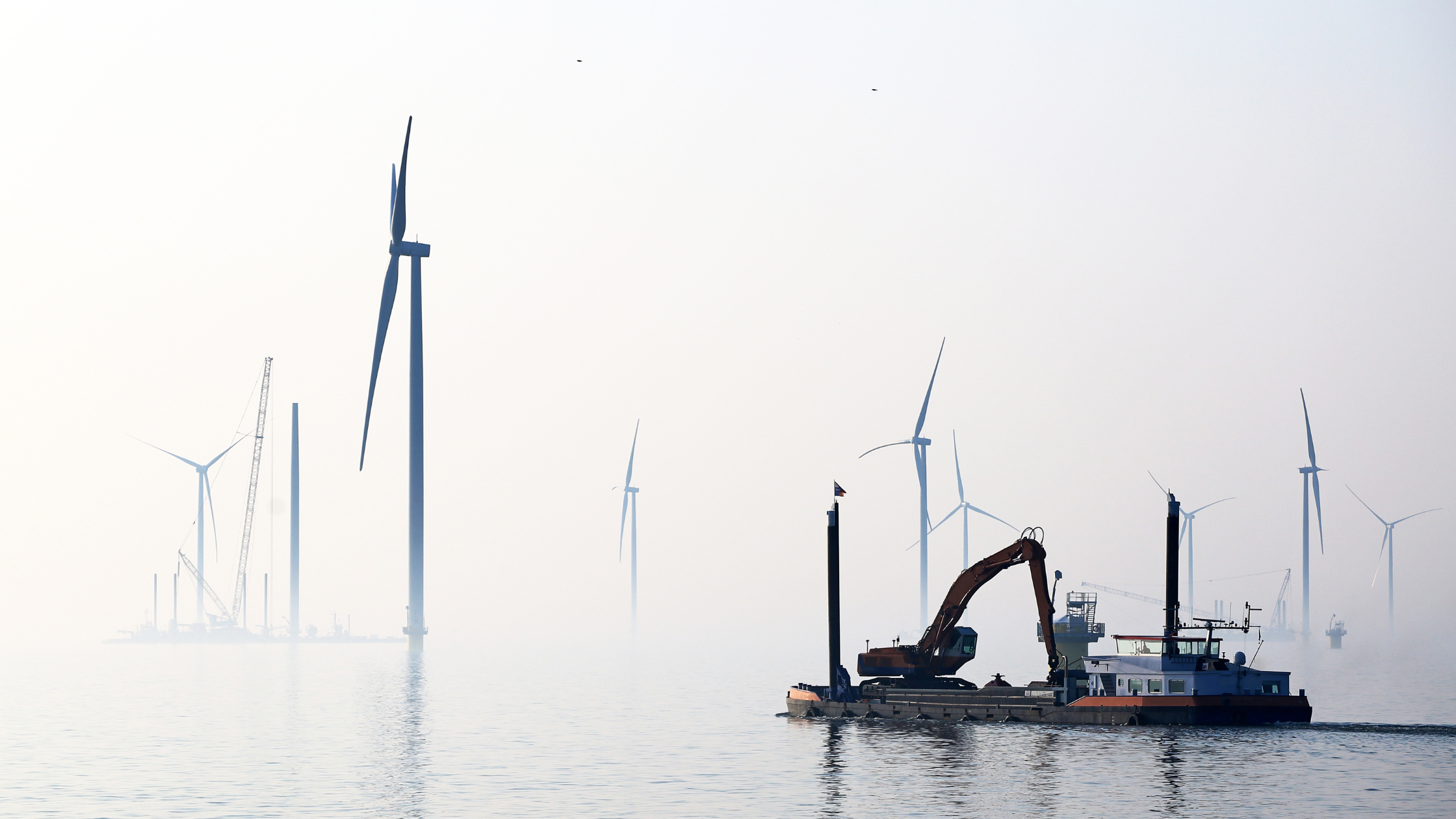
After an inauspicious start, will 2024 bring stronger tailwinds for US offshore wind?
What’s happening? Equinor and BP have terminated their power sale agreement for the proposed Empire Wind 2 offshore wind farm in New York, citing challenges such as rising inflation, higher borrowing costs, and supply chain disruptions. Equinor plans to “reset” the project amid New York’s offshore wind solicitation launched in November. The state’s initiative allows companies to exit old contracts and re-apply for projects at higher prices due to shifting economic conditions. While offshore wind is crucial for decarbonising the power grid, industry progress has slowed due to cancelled contracts in other states, prompted by inflation and supply chain issues. (Reuters)
Why does this matter? Although offshore wind is expected to play a crucial role in President Biden’s plans to decarbonise the power grid and tackle climate change, the fledgling US offshore wind industry has had a disrupted emergence into the nation’s energy mix. At the start of 2023, the US operated just two offshore wind projects – in Rhode Island and Virginia – with a combined capacity of 41 MW. In comparison, the UK had 13.6 GW of operational capacity, according to research published by RenewableUK in February 2023.
A difficult 2023 – Building a nascent industry from the ground up is challenging in the most forgiving of times, but market conditions were anything but lenient in 2023. Risks and obstacles mounted throughout the year across the global offshore market, and US projects acutely felt the impact of high interest rates, supply chain constrictions, and inflationary pressures. In October, Ørsted abandoned two projects off the New Jersey coast, citing “macroeconomic factors [that] have changed dramatically over a short period of time.” Before Ørsted discarded its New Jersey plans, Avangrid also cancelled contracts to sell power generated by projects off the coast of Massachusetts and Connecticut, saying they had become “unfinanceable.” Across the global offshore market, reports suggested that at least ten major projects totalling $33bn had faced delays or cancellations in July and August 2023, including Vattenfall’s $537m North Sea project after technology costs soared by 40%. Despite these acute market risks, New York state’s decision to launch a solicitation and allow Equinor and BP to renegotiate contracts reveals the flexibility US state administrations are willing to exercise to ensure the offshore wind industry develops – an encouraging sign for firms operating in the space.
Strong pipeline – Further promising market signals lie in the US’ healthy offshore wind pipeline moving into 2024. In terms of active sites, New York’s first offshore wind farm began generating power in December and on January 3 the Vineyard Wind development off the coast of Massachusetts started delivering power to the New England grid, which is the US’ first large-scale offshore wind project to go live. Facilities currently in development include Shell and EDF’s joint venture to develop a 1.5 GW wind farm in New Jersey, Dominion Energy’s 2.5 GW Virginia facility set to begin construction in May 2024, Avangrid’s re-bid for the contracts in Massachusetts and Connecticut it previously deemed “unfinanceable”, and Ørsted’s commencement of building its $4bn Revolution Wind project in spring of 2024. Public sector flexibility and generous subsidies as part of the Inflation Reduction Act mitigate market risks in the US to some extent, providing firms operating in the US market greater stability than some of their counterparts.
Political pressure – From a political standpoint, Biden and his administration are under pressure to deliver greater offshore wind capacity before November’s election. Pledges that still need to be met include approving 16 wind arrays by 2025, amounting to roughly 19 GW of power, and holding lease sales in a broader range of areas, such as the Gulf of Maine. State departments also exhibit a healthy appetite for offshore wind, which will be music to Biden’s ears: collectively, states seek contracts worth a combined capacity of 14GW. So far, the Bureau of Ocean Energy Management has approved six new projects. Biden hopes to install 30 GW of offshore wind capacity by 2030 – at present, analysts forecast capacity to reach around 15 GW by the end of the decade. A separate report estimates that $22bn of investment will be needed to improve supply chain resilience if the 30 GW goal is to be reached – a level of investment currently severely lacking.
State-level climate laws – Alongside Biden’s pledges, individual states have their own climate targets to achieve. New York state, for instance, has some of the most ambitious laws in the US: by 2030, it aims to generate 70% of its electricity from renewable sources and, by 2040, achieve 100% renewably sourced electricity across the state. By 2050, economy-wide carbon neutrality is targeted. In 2022, New York generated around 29% of its electricity from renewables, so there is a significant deficit to cover. Significant risks lie ahead for the State Department as these targets are mandated and enshrined in law. However, this ambition could breed market opportunities for renewable energy firms operating in the state as even greater flexibility on contract terms and subsidies could materialise as the target dates draw nearer.
While there is cause for optimism for the US offshore industry as interest rates seem to have peaked, the number of construction companies capable of building offshore wind farms has increased, and staunch political will fosters a conducive regulatory environment for energy providers, the aftershocks of a disruptive 2023 may still make themselves felt over the next 12 months. Continued political support and financial aid to properly cement offshore wind’s position in the nation’s energy mix may be the factors that blows the dial in offshore wind’s favour, but realising Biden’s ambitious end-of-decade targets will likely be a bridge too far.


